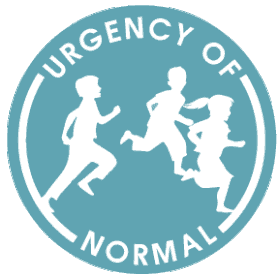We're pro-vaccine but can't support California lawmaker's school COVID vaccine mandate
Two physician epidemiologists argue in this op-ed the likely costs of Sen. Pan's bill would not be worth the benefits
Two weeks ago, state Sen. Richard Pan introduced a new bill which would require all children K-12 to be vaccinated against COVID-19 in order to attend school in person after Jan. 1, 2023. Unvaccinated children would be forced into remote learning.
Pan said, “We need to make sure schools are safe so that all parents are comfortable sending their children to school.”
Every parent wants safe schools. But our children deserve medical care driven by facts, not politics. As physician epidemiologists, we have analyzed the data and found that this mandate is not supported by the scientific evidence — which is why no European countries or other U.S. states have implemented their own.
California already has a mandate for children over 12, which will be triggered once the vaccines receive full approval. Pan’s bill would go much further, requiring every child in K-12 to be vaccinated while the shots are still under emergency use authorization.
The stricter requirement is necessary, according to Pan, to reduce transmission of the disease in schools. That may once have been possible. Unfortunately, with the emergence of the omicron variant, immunization no longer prevents people from catching and spreading the virus long-term. While they are still extremely effective at preventing severe disease, vaccines stop just 5% to 30% of omicron infections, according to several studies that have yet to go through peer review. Even this benefit seems to evaporate a few months after the last shot.
Insinuating mandating student vaccination will “keep schools open” or will “keep schools safe” is misleading. In fact, this messaging may result in students knowingly coming to school with symptoms because their parents think they can’t spread the virus.
While the protective benefits of vaccination are extremely clear for adults, the data for children is murkier. First, children are at extremely low risk of severe COVID-19. Even before the emergence of omicron, which is considerably more mild than earlier strains, the virus was less deadly to children than flu and pneumonia, heart disease, car crashes or guns. Centers for Disease Control and Prevention data also suggests that children who have already caught and recovered from COVID-19 may benefit very little from vaccination.
Although serious side effects of immunization are exceedingly rare, mounting evidence suggests even those are more common than severe COVID-19 in some children, including teen boys. We should further study a specific — and rare — side effect called myocarditis that appears to occur in one in 3,000 to one in 7,000 boys between 12 and 17 after a second COVID-19 vaccine dose. Because of these issues, we believe parents should have the right to make an individual risk-benefit calculation for their children.
In Europe, this stance is not controversial. Norway, Sweden and the U.K. only recommend — not require — vaccines for high-risk 5-11 year-olds. Countries such as the Netherlands and Norway acknowledge children may not benefit from vaccination if they have already recovered from infection.
Excluding unvaccinated children from in-person learning would come at an enormous cost, at a time when they should be catching up on critical academic and social experiences. In December, when the Los Angeles Unified School District tried to implement a K-12 COVID-19 vaccine mandate, they found that 30,000 students ages 12 and older hadn’t met the mandate requirements. If we extrapolate those numbers to the entire state, and take into account lower vaccination rates among children ages 5-11, over a million California children could be forced into remote learning. It is also important to acknowledge that Black and Latino children are less likely to be vaccinated, meaning they would likely be excluded at higher rates than their white peers.
We understand that COVID-19 vaccines have become highly politicized, with support for adult mandates often splitting down party lines. Even before the pandemic, school immunization requirements were a controversial issue; indeed, Pan has pushed several bills that expand student vaccine mandates. We support mandates for vaccines like measles and mumps, which protect children against infection and transmission for a lifetime. COVID-19, though, is a different kind of virus, which — like the flu — can spread even among vaccinated people. That’s why the flu vaccine is not required for school attendance.
Experts increasingly admit that COVID-19 will be with us indefinitely. As we adapt to this new reality, it is vitally important that we follow the science, particularly when it comes to the health and safety of children.
Because Pan’s bill would only provide slight and fleeting protection against transmission in schools — at the potential cost of banishing hundreds of thousands of kids from in-person learning — we cannot support it.
Tracy Beth Høeg is a Danish-American physician in private practice in California with a PhD in Epidemiology and Public Health and is the senior author of multiple peer reviewed scientific studies of COVID-19 and children. Vinay Prasad is associate professor of epidemiology at UCSF and practicing hematologist oncologist He is author of 2 books and 300 peer reviewed papers.

